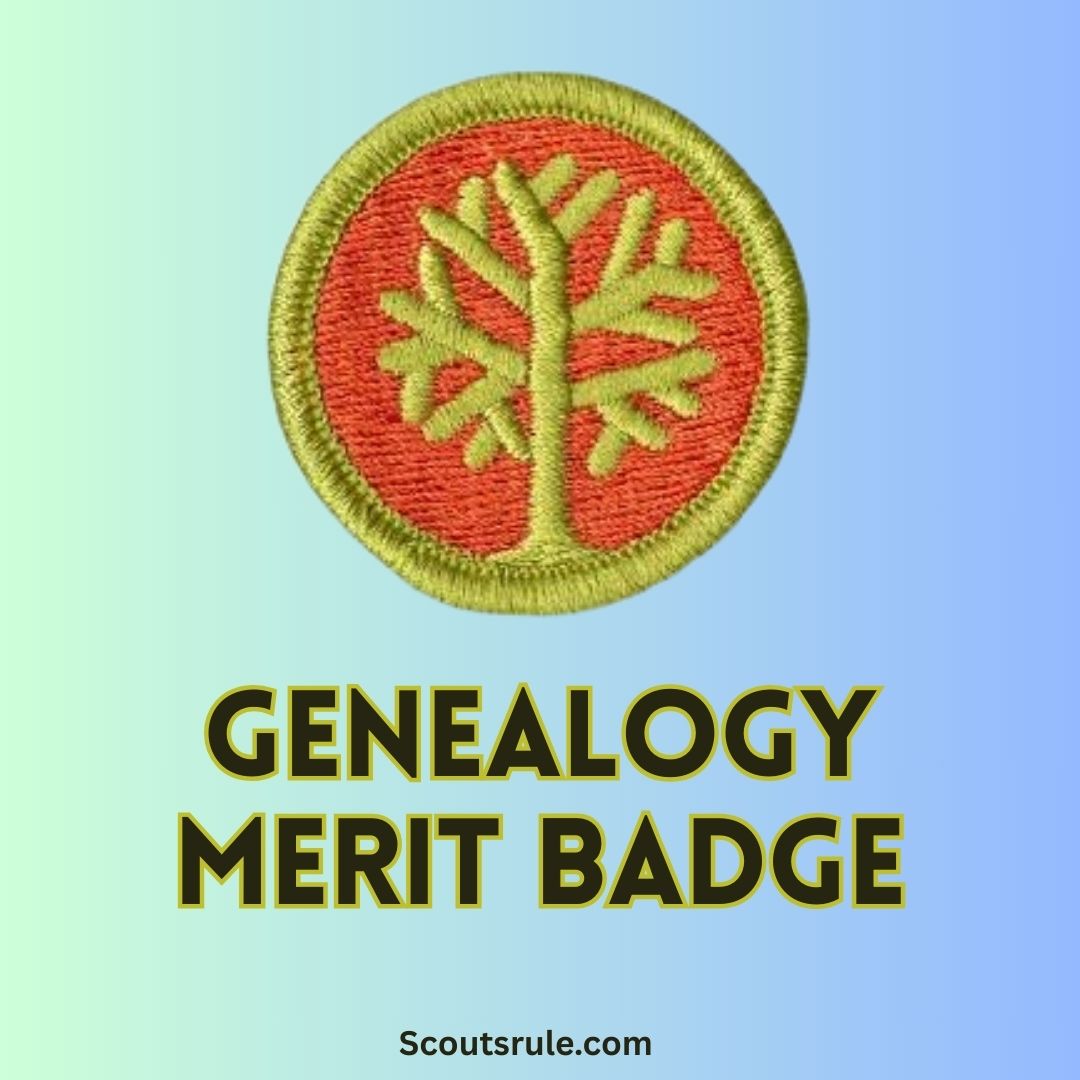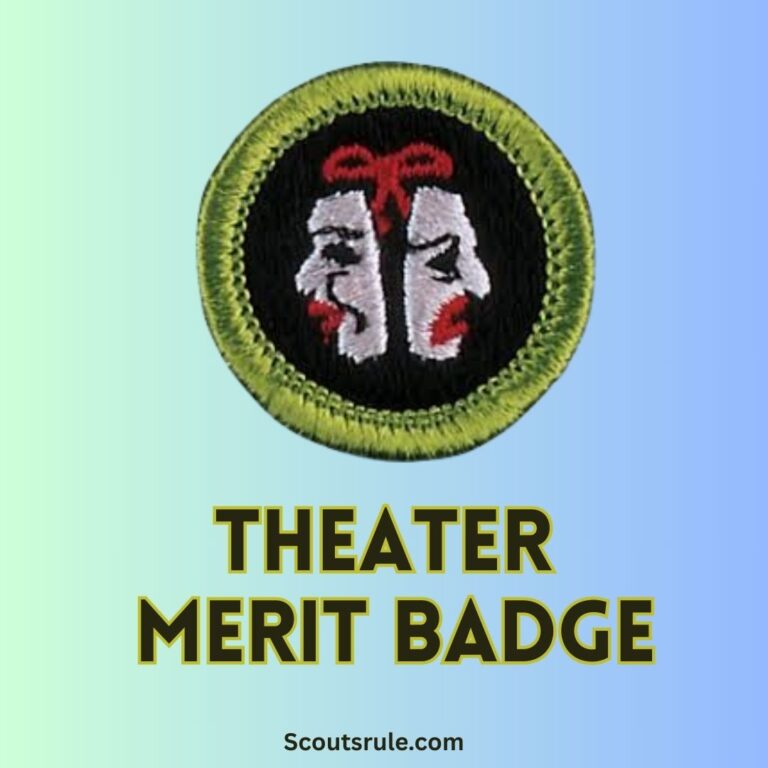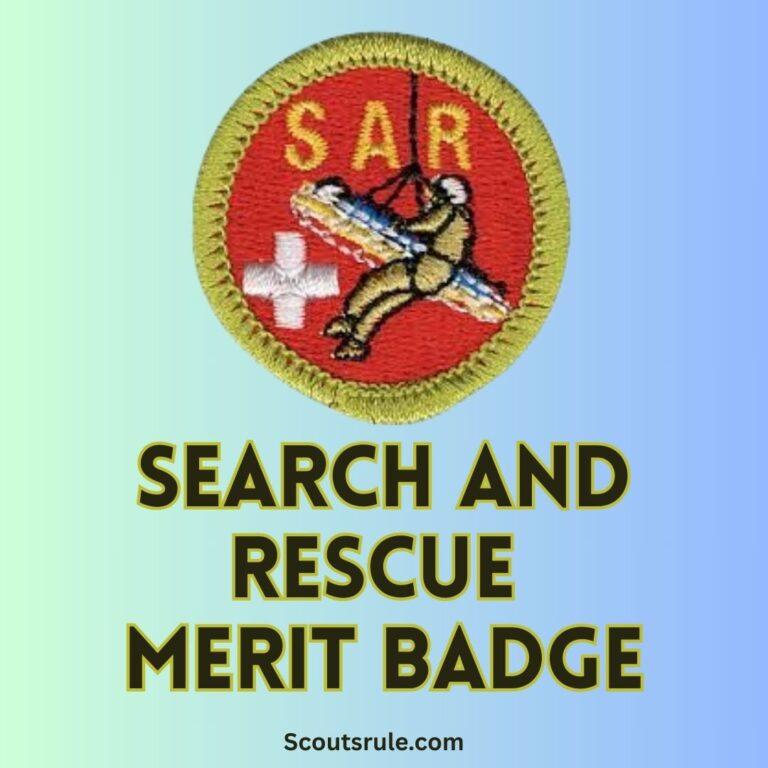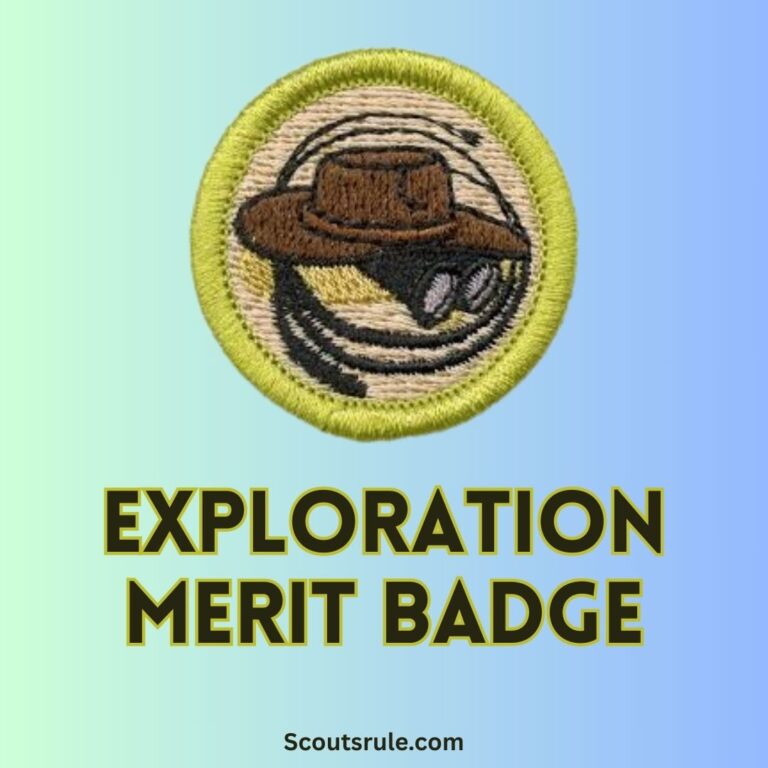
This guide is designed to help you explore your family history, understand the methods of genealogical research, document your findings, and appreciate the significance of your heritage. It outlines the key requirements, offers project ideas and hands‑on activities, and suggests strategies for organizing and presenting your work. Use this guide as a study aid to supplement the official Boy Scouts of America merit badge pamphlet. Always work closely with your merit badge counselor and refer to the current official guidelines to ensure your projects and documentation meet local council standards.
Post Contents
- Introduction: Discovering Your Roots
- 2. Purpose and Objectives of the Genealogy Merit Badge
- 3. Understanding Genealogy: Key Concepts and Resources
- 4. Key Merit Badge Requirements
- 4.1 Requirement 1: Define Genealogy and Explain Its Importance
- 4.2 Requirement 2: Create and Explain Your Pedigree Chart or Family Group Record
- 4.3 Requirement 3: Research and Record Family History
- 4.4 Requirement 4: Evaluate Genealogical Sources
- 4.5 Requirement 5: Interview a Family Member or a Family Researcher
- 5. Field Projects and Hands‑On Activities
- 6. Documentation, Record Keeping, and Presentation Strategies
- 7. Additional Tips, Resources, and Future Applications
- Conclusion: Embracing Your Heritage
Introduction: Discovering Your Roots
Every family has a unique story—one that is passed down from generation to generation. The Genealogy Merit Badge invites you to embark on a journey of self-discovery and historical investigation by tracing your ancestry. In doing so, you think of genealogy as not just names and dates, but as a vibrant narrative that connects you to the struggles, triumphs, traditions, and cultures of those who came before you. By exploring your roots, you gain insight into who you are and learn how your forebears adapted to and influenced the world around them.
2. Purpose and Objectives of the Genealogy Merit Badge
The main objectives of the Genealogy Merit Badge are to help you:
- Discover Your Ancestry: Learn how to gather and interpret family records, historical documents, and other sources of genealogical information.
- Develop Research Skills: Practice methods of collecting, validating, and organizing data about your family history using both traditional sources (like birth and marriage records) and modern tools (such as online databases).
- Create a Family Narrative: Build a pedigree chart or family group record that documents your lineage and captures significant events in the lives of your ancestors.
- Assess the Reliability of Sources: Learn to evaluate the quality of the sources you encounter and explain why some records might be more reliable than others.
- Connect Personally with History: Reflect on how family history influences modern values and traditions, helping you appreciate cultural heritage and personal identity.
- Explore Career Possibilities: Investigate fields such as historical research, museum curation, archiving, or genealogy that can turn hobby into a lifelong career.
Achieving these objectives not only satisfies the merit badge requirements but also encourages you to understand the legacy passed on to you by your ancestors.
3. Understanding Genealogy: Key Concepts and Resources
3.1 What Is Genealogy?
Genealogy is the study of family history. It involves tracing family lineages by recording names, dates, relationships, and significant events. At its core, genealogy is about exploring who your ancestors were, where they lived, and how they lived. It invokes methods from historical research and sometimes even anthropology to paint a picture of the past.
3.2 Family Trees, Pedigree Charts, and Family Group Records
- Family Tree: A simple diagram that shows relationships among family members across several generations. It often starts with you at the bottom (or the center) and branches upward to your parents, grandparents, and so on.
- Pedigree Chart: A detailed chart that typically focuses on direct ancestors, detailing names, birth dates, marriage dates, and sometimes even occupations or significant life events.
- Family Group Record: A record that includes not only the direct line of descent but also collateral relatives (such as siblings and cousins) to provide a broader view of the family structure.
Understanding these tools helps you organize your information and present your research clearly.
3.3 Sources of Genealogical Information
Genealogical research depends on a variety of source materials, including:
- Personal Documents: Letters, diaries, photographs, and personal mementos that have been passed down through generations.
- Official Records: Birth and death certificates, marriage licenses, census records, military records, and probate documents typically found in government offices.
- Church and Cemetery Records: Baptism, marriage, burial, and other religious certificates, along with gravestone inscriptions, offer valuable information on family members.
- Genealogical Databases and Websites: Online resources like the National Archives, FamilySearch.org, and Ancestry.com can help you access digitized records and connect with distant relatives.
- Interviews and Oral Histories: Conversations with older family members or relatives can provide insights that might not be recorded anywhere else.
Gaining proficiency in using these sources is a fundamental part of your research process.
4. Key Merit Badge Requirements
While the official requirements may differ slightly based on updates to the pamphlet, here are typical areas you will address for the Genealogy Merit Badge:
4.1 Requirement 1: Define Genealogy and Explain Its Importance
- What to Do: In your own words, define genealogy and explain why understanding family history is important. Discuss how tracing your roots can provide insight into who you are and offer a broader context for your own life experiences.
- Discussion Topics:
- The role of genealogy in preserving traditions.
- How knowing your family’s past can influence your personal identity and community connections.
- Documentation: Write a short essay or record a video describing your views on the significance of genealogy.
4.2 Requirement 2: Create and Explain Your Pedigree Chart or Family Group Record
- What to Do: Construct a pedigree chart or family group record that outlines your direct ancestors (and optionally collateral relatives). Include as much verified information as possible such as names, dates, places of birth, marriage, and death.
- Discussion Topics:
- The challenges and rewards of piecing together family history.
- How you verified the accuracy of your information using primary and secondary sources.
- Documentation: Include a copy of your chart with annotations that explain source documents and any uncertainties you encountered.
4.3 Requirement 3: Research and Record Family History
- What to Do: Gather additional details about your family’s history. This might include:
- Writing brief biographies of your ancestors.
- Documenting migration patterns (where they came from and where they settled).
- Collecting photographs, letters, or other memorabilia that contribute to the narrative of your family.
- Discussion Topics: Describe the tools you used—such as interviews, official records, and online genealogical databases—to assemble your family history.
- Documentation: Create a narrative report or a series of timelines that chronicle significant events in your family’s past.
4.4 Requirement 4: Evaluate Genealogical Sources
- What to Do: Learn about and explain the differences between primary, secondary, and tertiary sources. Identify at least three different types of sources you used in your research and explain how each type contributes to the reliability of your data.
- Discussion Topics: How to check for accuracy, biases, or gaps in historical information.
- Documentation: Write a review or create a comparison chart of various sources, detailing your evaluation criteria and what you discovered.
4.5 Requirement 5: Interview a Family Member or a Family Researcher
- What to Do: With the help of a parent or guardian, interview an older family member, or if possible, a professional genealogist. Ask questions about your family’s tradition, history, or any interesting stories they may have.
- Discussion Topics:
- Their personal memories of your family’s past.
- Their advice on uncovering and preserving family history.
- Documentation: Record the interview (using audio, video, or written notes) and include a summary of the key points. Reflect on how this conversation enriched your research.
5. Field Projects and Hands‑On Activities
Practical projects are an integral way to engage with genealogy. Here are some hands‑on project ideas:
5.1 Building Your Family Tree
- Objective: Create a visual family tree that includes several generations. Use a software tool or a large poster board to design an aesthetically pleasing tree.
- Steps:
- Gather information from your journal and research.
- Use clear symbols and consistent formatting.
- Include optional details like significant events (e.g., migration incidents, major achievements).
- Documentation: Hang your tree in a common area or present it to your troop, and include photographs and a narrative explanation in your portfolio.
5.2 Timeline Creation of Family History
- Objective: Construct a timeline that charts key events (births, marriages, achievements) in your family’s history.
- Steps:
- Use historical records and personal anecdotes.
- Highlight important dates on a linear timeline.
- Documentation: Include the timeline in your portfolio along with explanatory notes that describe the significance of selected dates and events.
5.3 Document Analysis and Source Evaluation
- Objective: Select one or more genealogical documents (old letters, certificates, or photographs) that support the data in your family tree.
- Steps:
- Analyze the document’s origin, context, and reliability.
- Compare it with other sources or records.
- Documentation: Write an evaluative report discussing the document’s contribution to your research, and include clear images of the documents if possible.
6. Documentation, Record Keeping, and Presentation Strategies
Effective documentation is a cornerstone to successfully earning the Genealogy Merit Badge:
- Maintain a Detailed Research Journal: Record daily or weekly entries that include dates, sources used, interview notes, and personal reflections. Hand-drawn diagrams, timelines, and annotated photographs strengthen your documentation.
- Assemble a Final Portfolio: Organize your research notes, copies of key documents, photographs, family trees, timelines, and written reports. Use clear section dividers and a table of contents so your merit badge counselor can easily navigate your work.
- Prepare a Final Presentation: Create a slideshow, poster, or oral presentation summarizing your journey. Discuss key findings, challenges, and how studying genealogy has influenced your perspective on family and history.
- Reflect: Write a final reflection on the impact of this research experience, how it has enriched your identity, and what you might do next in your genealogical journey.
7. Additional Tips, Resources, and Future Applications
Additional Tips
- Start Early: Begin your research as soon as possible. Genealogical research can be time‑consuming, and early starts give you the chance to revisit and update your records.
- Stay Organized: Keep your sources, notes, and documents meticulously organized. Use folders (both digital and paper) labeled by category—such as vital records, interviews, and family memorabilia.
- Ask for Help: Don’t hesitate to approach older family members, local libraries, or even genealogy clubs for assistance. Their experience can provide invaluable guidance.
- Verify Your Sources: Always assess the credibility of information by cross-referencing with multiple sources. Understanding the difference between primary and secondary records will help safeguard the accuracy of your research.
- Be Patient and Persistent: Genealogical research can involve dead ends and unexpected discoveries. Persevere through challenges and use setbacks as learning opportunities.
Recommended Resources
- Official BSA Materials: Always begin by reviewing the official Genealogy Merit Badge requirements available on the Boy Scouts of America website.
- Genealogical Websites and Databases: Resources like FamilySearch.org, Ancestry.com, and the National Archives often have digitized records useful for genealogical research.
- Books and Guides: Look for beginner-friendly texts such as “Genealogy for Dummies” or specialized texts on your local history. Public libraries and online bookstores are great places to start.
- Local Historical Societies: Contact local archives or museums—many have collections or even staff that specialize in genealogical records and family histories.
- Workshops and Seminars: Some communities and educational institutions offer genealogical research workshops. These sessions can provide hands‑on experience with databases and document evaluation.
Future Applications
Knowledge of genealogy can lead to many rewarding opportunities:
- Historical Research: Careers in archives, museum curation, or local historical societies.
- Cultural Anthropology: Exploring the impact of family traditions and cultural heritage in modern communities.
- Education: Teaching others about the importance of preserving family and cultural history.
- Personal Enrichment: Many hobbyists take up genealogy as a lifelong project, contributing their findings to online forums and even writing books or creating documentaries about their families.
Reflect on what aspects of genealogy interest you the most, and consider how your research might lead to further academic or volunteer opportunities.
Conclusion: Embracing Your Heritage
The journey of genealogical research is both personal and historical. Earning the Genealogy Merit Badge gives you the tools to catalog your family’s past and understand how the traditions and experiences of your ancestors have shaped who you are today. Through careful research, thoughtful documentation, and meaningful interviews, you build not only a family tree but a lasting connection with your heritage. In exploring your own lineage, you come to appreciate the sacrifices, triumphs, and everyday stories that unite generations.
May your exploration of genealogy inspire you to honor your ancestors, share your discoveries with family members, and continue learning about the rich tapestry of human history. The skills and insights gained through this merit badge will serve you for a lifetime—and may they spur you to preserve not only the record of your heritage but also the values of family, community, and history.
Happy researching, and may your journey into genealogy lead you to a future filled with discovery, pride, and a lifelong commitment to understanding and celebrating your heritage!

Hi, Robin here, A former lead Scout and here I share my inspiring stories about USA Scouts, leadership, adventure, how to guides and more.






